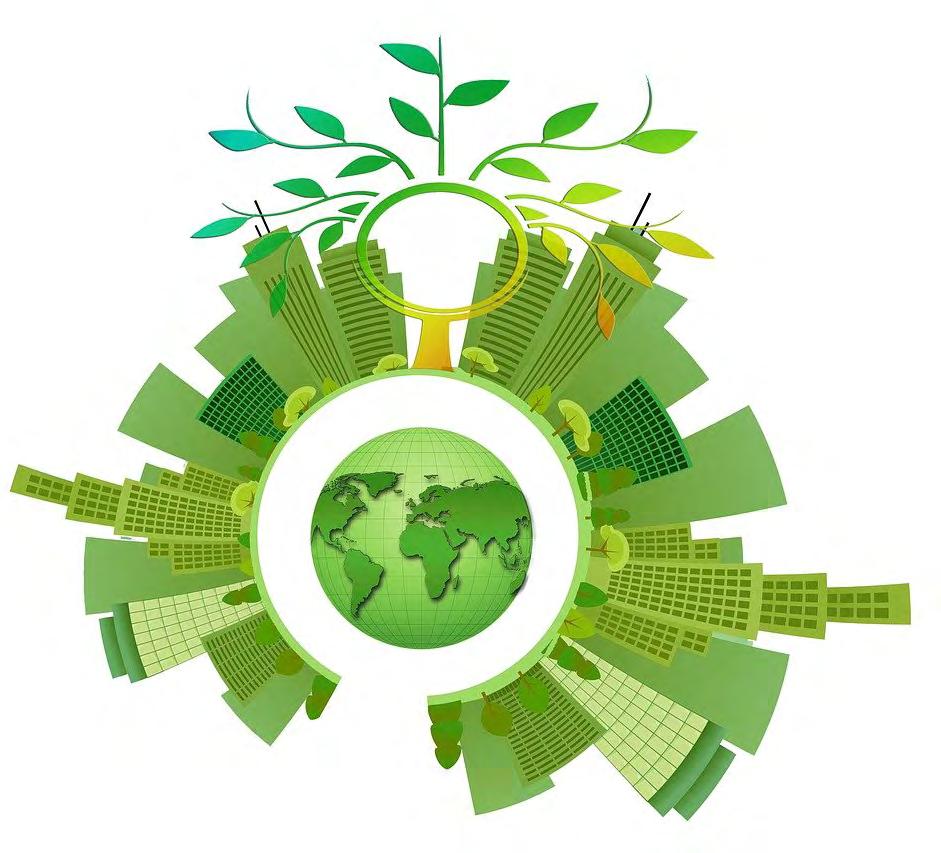
4 minute read
Exploring the Art-Science interface at Europe’s biggest geosciences conference
By event curators
Kelly Stanford, Daniel Parsons, Kostya Novoselov, Louise Arnal.
Advertisement
The European Geosciences Union hosted a virtual annual general assembly from 19 to 30 April 2021. As part of the many scientific sessions organized, Kelly, Daniel, Konstantin and Louise convened one of the largest yet science-art sessions at this event: “Exploring the Art-Science Interface” on 28 April. This session aimed to give a voice to science-art collaborations that play a pivotal role in raising awareness of the fragile stability of our planet.
Above: Poster created by Kelly Stanford for the EGU 2021 session ‘Exploring the Art-Science Interface’. Copyright applies. All rights reserved.
EGU’s science-art events
The European Geosciences Union (EGU) is an interdisciplinary association of geoscientists. It has been hosting a yearly general assembly for the last two decades. The sessions organized cover a range of topics, including space, atmospheric and water sciences. In the last few years, science-art initiatives have been increasing at these events. These include the artist in residence programme, where selected artists, such as Kelly this year, are invited to the event to create art inspired by the geoscientific presentations. Another successful initiative has been science-art sessions. We have bought together the geoscientific and artistic communities again this year. Due to the ongoing pandemic, this event was held virtually again this year. But we saw this as an opportunity to connect with and hear perspectives from people all around the world.
Bridging the divide
Interdisciplinary collaboration between artists and geoscientists are becoming increasingly invaluable in communicating complex geoscience subjects to non-experts. Topics such as climate change can be contradictory and confusing to the general public, particularly in terms of uncertainty and impact. It is therefore vital that STEM communicators work to find alternative methods to enable dialogue between experts and the wider public on how to face and respond to these increasingly prevalent topics. It is becoming increasingly evident that both the scientific and the artist communities have a shared interest and responsibility in raising awareness of the limits to our planetary boundaries and the fragile stability and resilience of our Earth-System. In the past, this issue has been addressed mostly through traditional educational methods. However, there is mounting evidence that science-art collaborations can play a pivotal and vital role in this context by co-creating new ways of research and by stimulating the discussion by providing emotional and human context through the arts.
The highlight presentations
This session showcased interdisciplinary research exploring the dialogues between the geosciences and the arts. The session was organized in two sub-sessions, with presentations on a range of scientific themes and artistic media. While the first session was more general, the second sub-session focussed exclusively on art for sustainability. Below is a list of the highlight presentations:
Stargazing at the ‘Invisible’: Photography and the Power of Obscured Light – A Research Partnership with Kielder Observatory. Helen McGhie
The story of a tree and what its tells us about our life John Bruun
Disaster Passed: a singing, flashing and sobering glimpse into coping with volcanic eruptions Jenni Barclay, Karen Pascal, OutPut Arts, Martin Mangler, James Christie, Teresa Armijos, Wendy Mcmahon, Richie Robertson, Stacey Edwards, and Kathleen Retourne
Artful-Geoscience: Co-Creating Urban Subsurface Futures? A discussion and an invitation. Harriet Hawkins, Stephanie Bricker, Carol Cotteril, Eilidh Dunnet, Anna Hicks, and Hazel Napier
The carbon story: A textile-geoscience collaboration to represent changing atmospheric CO2 concentrations through time Fiona Gill and Naomi Bailey-Cooper
INtergenerational Stories of Erosion and Coastal community Understanding of REsilience ‘INSECURE’ Katie Parsons, Florence Halstead, and Lisa Jones
Uniting science and art to appreciate the Earth with NatureVolve magazine Clarissa Wright and Robert James Wright
Fore more information about this year’s session, have a look at the session programme.
Take home messages
We live in a world of rapid environmental changes. In this context, it is becoming evident that to take actions towards a sustainable future, diverse voices need to be heard and come together.
Through the science-art session we co-organized at the European Geosciences Union virtual general assembly 2021, we hope to have helped advance discussions on how to use science and art to co-explore and communicate the social, economic, political and environmental factors facing society and drive improved communication.

About the team
Kelly Stanford is a science communicator, artist and researcher at the University of Hull Energy and Environment Institute embarking on a PhD looking at how art and games can be used as effective science outreach tools. Kelly is an EGU Artist in Residence this year.
Daniel Parsons is the director of the Energy and Environment Institute at University of Hull and chair of Geomorphology at EGU. He is a researcher in fluvial, estuarine, coastal and deep marine sedimentary environments, exploring their responses to climate and environmental change.
Kostya Novoselov is a physicist, best known for his pioneering experiments on graphene. He also received a formal education in Chinese art and combines his passion for physics and for Chinese painting in his art works.
Louise Arnal is a scientist with a lifelong love of art. She is a postdoctoral fellow with the Canadian Global Water Futures programme and leads the Virtual Water Gallery project. Louise enjoys exploring water using scientific tools and artistic media.
Kelly, Daniel, Kostya and Louise are all conveners of the EGU 2021 ‘Exploring the Art-Science Interface’ session.
Find out more
You can connect with Kelly on Twitter (@TheLabArtist) where she posts about her recent collaborations and sciencethemed artwork.
An archive of her current and past projects can be found on her website: https://www.kellystanford.co.uk
You can connect with Louise on Twitter and Instagram @ArnalLouise. Have a look at Louise’s website to see some of her previous science and art projects: https://sciartfloods. wordpress.com
If you’re curious about her ongoing science and art project, you can find out more about the Virtual Water Gallery here: https://www.virtualwatergallery.ca







